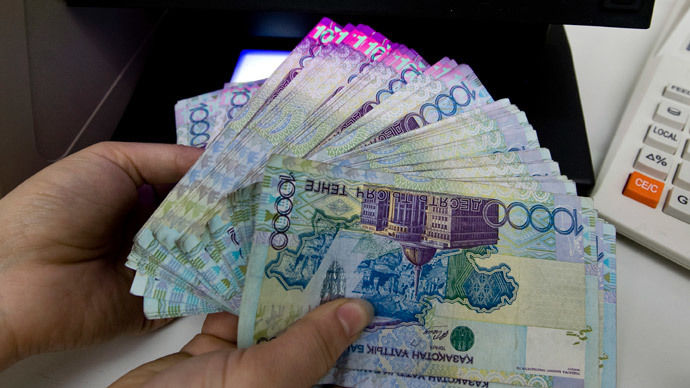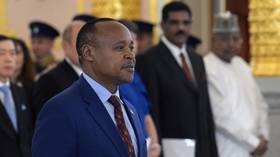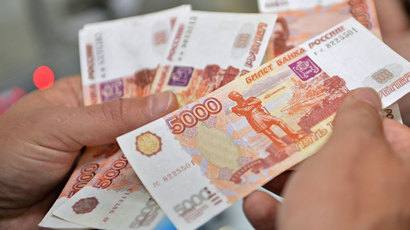Kazakhstan’s currency devalued 19%, as Russia’s ruble slides. Who’s next?

The National Bank of Kazakhstan has devalued the tenge by 18.9 percent, as the Russian ruble keeps on hitting new lows against the dollar. Weakness in emerging markets is increasing, with experts warning more devaluations across the region could follow.
Instead of taking a gradual approach like Russia’s central bank, Kazakhstan decided to devalue its currency in one go, ditching the KZT 145-155 peg against the dollar and moving to KZT 185 last week.
“The decision was apparently triggered by the weakening of Russia’s ruble, which has put local industries under competitive pressure from Russia. Kazakhstan devalued its tenge not to lose the Russian market, which the country is very exposed to,” Vladimir Osakovsky, Chief Economist for Russia and the CIS at Bank of America Merrill Lynch, told RT. The analyst said that about 36 percent of Kazakhstan imports are coming from Russia.
UBS Global Research sees Kazakhstan’s move as a signal for Ukraine to devalue the hryvnia.
“We think that such weakness of the otherwise well-supported tenge exposes the Ukrainian hryvnia as the next likely candidate for devaluation,” Osakovsky said.
The hryvnia has been under rising pressure, as protests in the streets of Kiev are damaging the economy and increasing political risks. The fact that about a third of Ukraine’s imports come from Russia, where the domestic currency is losing value, is also weighing on the hryvnia.
“Unlike Kazakhstan, Ukraine has a large current account deficit, high external debt as well as already low international reserves at the National Bank,” the Merrill Lynch expert added.
As for Belarus, an ally of Russia and Kazakhstan in the Customs Union, "the National Bank will not react in the next week or two," the Moscow Times quotes Dmitry Kruk, an economist at the Belarusian Economic Research and Outreach Center in Minsk.
"But if the devaluation of the Russian currency is more prolonged, then it will have to take account of this fact, and let the Belarusian ruble fall," Kruk added.
Russia and Kazakhstan, along with other emerging markets, have experienced significant capital outflow in 2013, and investment continues to flock to the US and other developed markets as the US continues to wind down its monthly $65 billion monetary stimulus.

Ruble in danger?
Russia isn’t that dependent on Kazakhstan, as it accounts for just 3 percent of Russia's total trade. “This means that the negative effect from the tenge devaluation on the Russian currency will be limited,” Osakovsky explained.
According to the Russian Federal Customs Service, Russia-Kazakhstan trade was $22.4 billion in 2012 and $13.1 billion in the first half of 2013.
Last week First Deputy Prime Minister Igor Shuvalov said the weak KZT will have “no effect” on Russia, because they don’t have a currency union.
“How could it affect us? We don’t have a currency union,” Shuvalov told reporters.
The Russian ruble has lost 16.4 percent against the US dollar since January 2013, and continues to drop against the dollar as the Russian Central Bank (CBR) aims to establishing a free-floating currency by 2015. After some recovery last week the ruble has reached its all-time low against the dollar of 35.25 on Monday, according to the data from the CBR.
However, Osakovsky expects the ruble to strengthen by the end of 2014 – to about 34.5 against the dollar.














